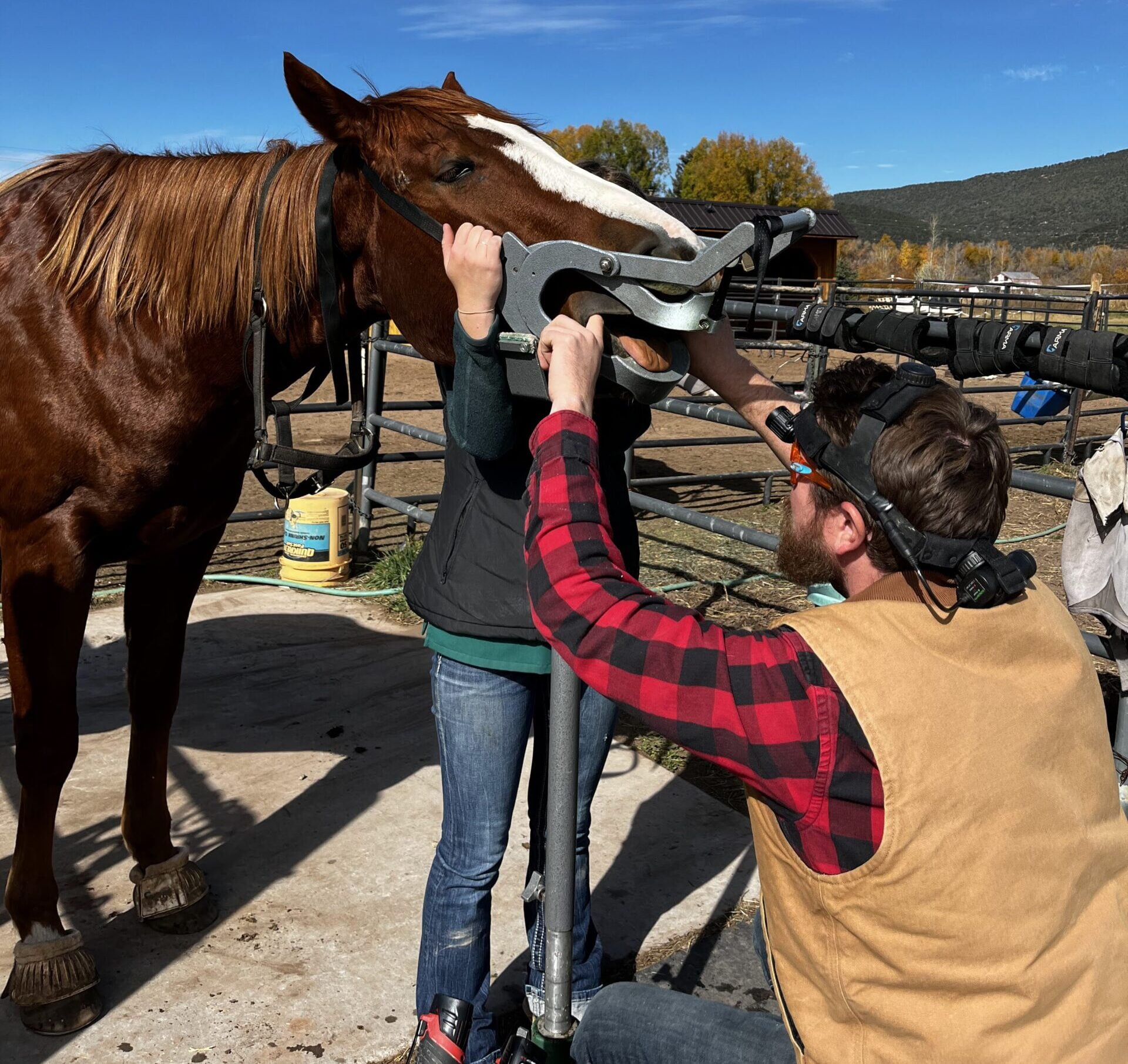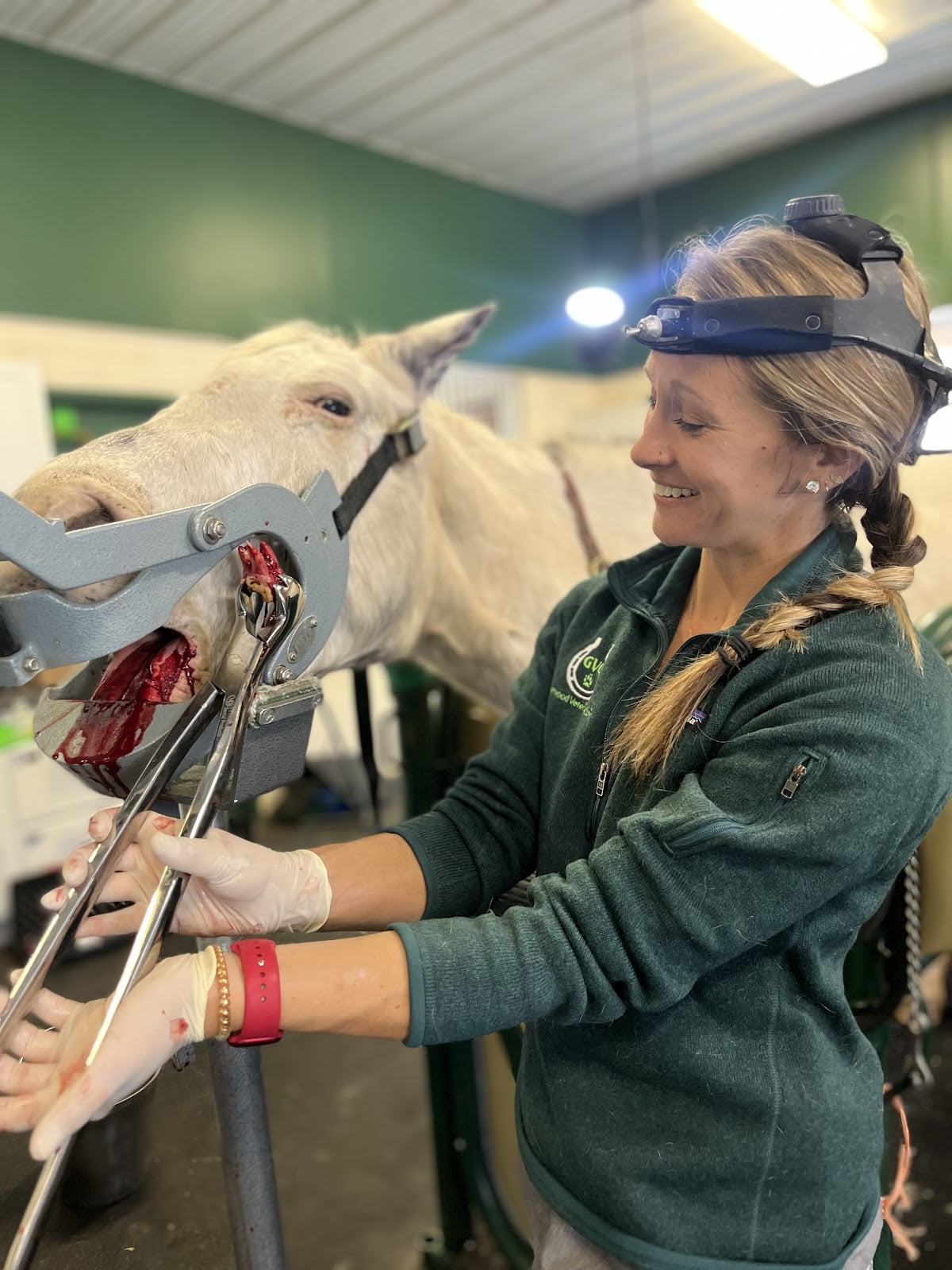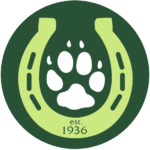We are pleased to offer full-service equine dentistry. Our veterinarians recommend horses of all sizes and ages be seen at least yearly for a dental examination and float. We usually recommend that horses who are younger (12 months – 7 years) and older (older than 20 years) be seen every 6 months, as their mouths are changing more rapidly. This is the best way to stay on top of a horse’s comfort and oral health! As is the story with humans and dogs, oral health is the gateway to systemic health, and by keeping up with dental care, we can prevent heart, liver, or other disease from happening down the line.
Equine Dentistry

Physical Dental Exam
Every dental exam starts with a physical exam, to assess the horse’s overall health and ensure sedation will be safe to give. We also take this time to look over the structure of the horse’s head: muscles involved with moving the mouth, chewing, etc., the TMJ joint (where the jaw meets the skull), and cranial nerve function. Once the horse is sedated, we rinse the mouth and begin the oral exam. This may look very similar to a human dentist: mirror, probe, light, and all! We see how the teeth are lined up, and how they are wearing. A horse’s upper jaw is wider than their lower jaw, which is why we see ‘points’ start to form on the cheek side of the upper teeth and tongue side of the lower teeth. Occasionally, these points can get very sharp and lead to ulcers in the cheeks, which understandably is uncomfortable for a horse. An owner may notice a horse being unwilling to take a bit, reluctant to work toward one side or the other, or become reluctant for oral medications among other things. We check for food packing between the teeth, which can be an early sign of periodontal disease.
Teeth Floating
Once the oral exam is complete, we float the horse’s teeth! We use a battery-powered dental float with a burr on the end. We use two different shapes: a disc and an apple core. This helps us to address all angles of the premolars and molars, gently grinding down sharp points and correcting the angle of the teeth. Our goal is to restore an appropriate occlusal angle – this means lining the teeth back up so the horse can chew well and break down their food the way they need.
Rinsing
After floating, we re-assess the alignment of the teeth, including the incisors. The mouth gets one more rinse, and the horse should be good to go!


Tooth Extractions
In addition to providing routine dental care, we also perform extractions when needed. A tooth may need extracting due to trauma (fracture), advanced dental disease, or other abnormalities. Our veterinarians have received training from equine dental specialists in order to be able to provide this service. After an exam and dental radiographs (x-rays), a decision can be made on whether a tooth needs extracting, which is done standing under sedation. Follow-up care consists of pain control, and rechecks at 2 weeks and 6 months.

